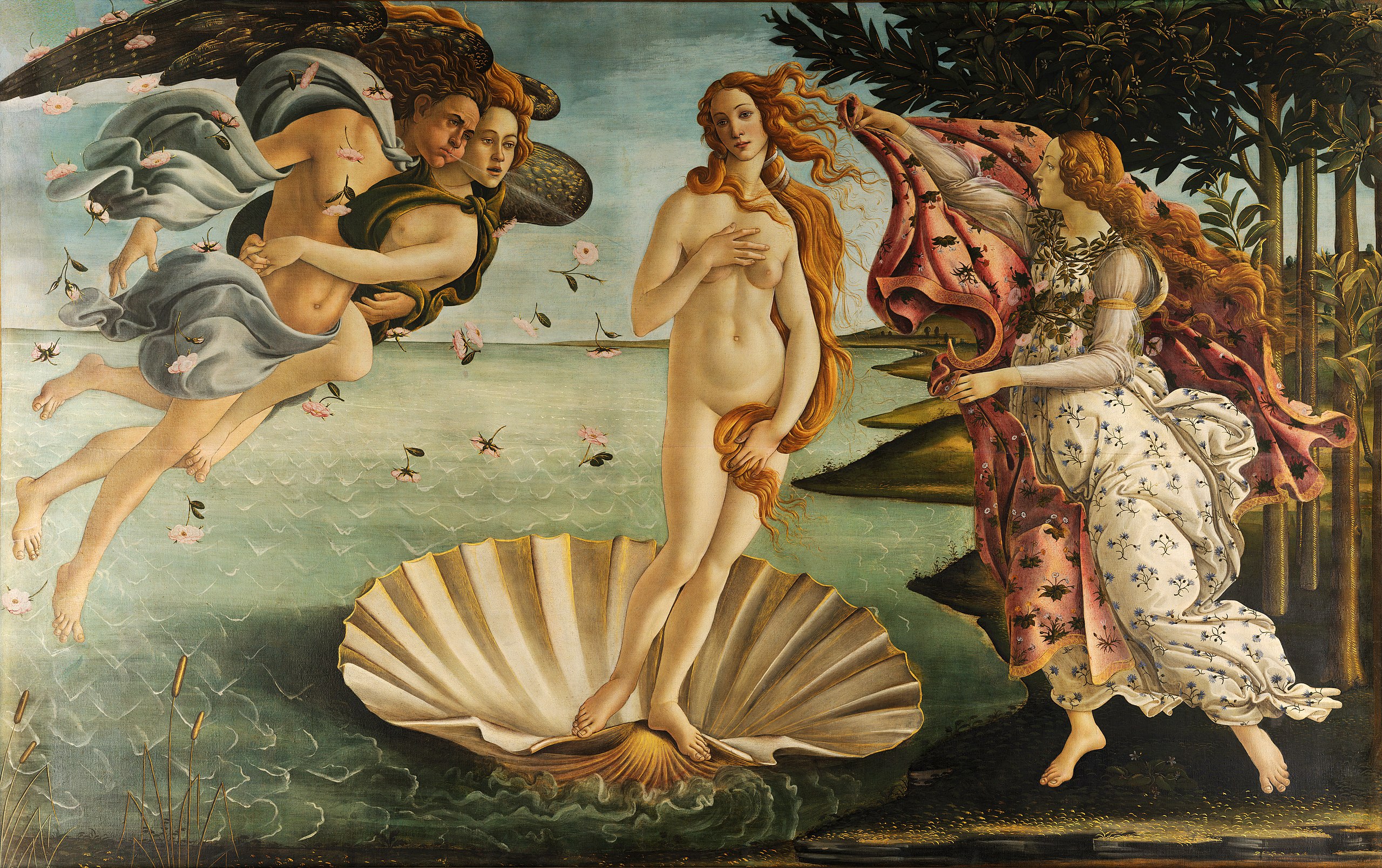
The Birth of Venus is a masterpiece by the Italian Renaissance artist Sandro Botticelli, which is widely considered one of the most iconic and beautiful paintings in the Western canon. The painting depicts the goddess Venus emerging from the sea on a shell, surrounded by a group of mythological figures, including Zephyr, the god of the west wind, and his wife, Chloris, the goddess of flowers.
The painting is a perfect example of the Renaissance fascination with classical mythology and the celebration of beauty, grace, and harmony. Botticelli’s use of line and colour is both precise and delicate, with every element of the composition arranged in a carefully calculated and harmonious way. The painting is full of symbolic meaning, with every detail contributing to the overall effect of the work.
One of the most striking elements of the painting is the use of colour. The soft, pastel tones of the figures and landscape create a dreamy and otherworldly atmosphere that enhances the sense of beauty and grace. The blue-green hues of the sea and the sky create a sense of tranquillity and calm, while the pink and orange tones of the figures suggest a sense of warmth and sensuality.
The composition of the painting is also striking, with every element of the painting contributing to the overall effect of the work. The sweeping curves of the figures and the shell create a sense of movement and grace, while the carefully arranged placement of the figures creates a sense of harmony and balance. The use of light and shadow also adds depth and dimension to the painting, creating a sense of three-dimensionality and realism.
The painting is full of symbolism, with every element contributing to the overall meaning of the work. The shell on which Venus is seated represents the female reproductive organ, while the flowers scattered around the figures represent the cycle of life and renewal. The figures of Zephyr and Chloris represent the forces of nature that bring new life to the world, while Venus herself represents the beauty and fertility of the natural world.
Overall, The Birth of Venus is a masterpiece of beauty and harmony. Botticelli’s use of colour, composition, and symbolism create a work that is both aesthetically pleasing and intellectually stimulating. The painting celebrates the beauty and grace of the natural world, and the timeless appeal of classical mythology. It is a work of art that continues to captivate and inspire viewers centuries after it was created, and it is a testament to the enduring power of aesthetic beauty.
The painting has also had a significant influence on the history of art. It has inspired numerous artists throughout the centuries, including Edgar Degas, Édouard Manet, and Salvador Dalí. The painting has also been the subject of numerous imitations and adaptations, as well as being featured in films, literature, and popular culture.
Despite its enduring popularity and influence, The Birth of Venus is not without its controversies. The painting’s nudity and sensual subject matter have been the subject of debate and criticism, particularly in more conservative or religious contexts. However, the painting’s beauty and grace continue to captivate and inspire viewers around the world, and its enduring appeal is a testament to the enduring power of art to move and inspire us.
In conclusion, The Birth of Venus is a masterpiece of Renaissance art that celebrates the beauty and grace of the natural world and the enduring appeal of classical mythology. Botticelli’s use of colour, composition, and symbolism creates a work that is both aesthetically pleasing and intellectually stimulating. The painting’s enduring popularity and influence are a testament to the enduring power of art to move and inspire us, and to its ability to capture the beauty and mystery of the human experience.

